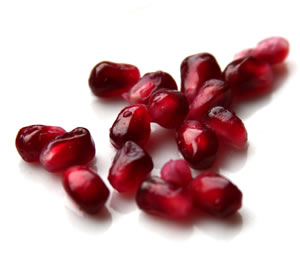 It should not be that hard to eat a healthy diet. Right? Then why did it take me close to a decade to figure out what worked for me? And why are most of us faced with health issues, unsure of what to eat and struggling to make sense of all the nutrition information that is out there?
It should not be that hard to eat a healthy diet. Right? Then why did it take me close to a decade to figure out what worked for me? And why are most of us faced with health issues, unsure of what to eat and struggling to make sense of all the nutrition information that is out there?
In his book “The Omnivore’s Dilemma”, Michael Pollan writes: “As a culture we seem to have arrived at a place where whatever native wisdom we may once have possessed about eating has been replaced by confusion and anxiety. Somehow this most elemental of activities -figuring out what to eat- has come to require a remarkable amount of expert help.”
We read newspaper columns and health magazines to find the latest information on nutrition, get excited by every new and promising diet book, and consult nutritionists to tell us what to eat.
Compared to the West, India seems to fare a bit better in this respect. Traditional wisdom is still present and used in a lot of families. But this is rapidly changing, especially with the influx of processed foods, fast food chains and ever reducing time to prepare and eat wholesome foods.
One of the most important reasons for all this confusion, in my opinion, is that we have lost touch. With ourselves, our awareness and our innate ability to sense what is good for us and what isn’t. We have lost connection with the earth, it’s soil, the changing climates.
The first step in rebuilding this connection is to create awareness so you are able to tune in to your body and become more receptive to who you are and what you need. In my case yoga helped me in becoming more mindful but there are many other great awareness practices that you can easily implement in your daily routine.
As far as nutrition is concerned, one important principle you can use to guide you when it comes to deciding what foods to eat or not to eat is nutrient density. This is definitely not the only principle to use but a great starting point on your road to better health and nutrition.
Nutrient density refers to the amount of nutrients for the given volume of food. Nutrient dense foods tend to have a lot of micro nutrients and fewer calories. The opposite would be energy dense foods: foods that have a lot of calories and relatively less nutrients. For example: a carrot vs. a donut or an apple vs. a packet of chips.
When we talk about nutrients we mean vitamins and minerals as well as phytochemicals. All of these are essential for our bodies to build and maintain a strong immune system, detoxification and cellular repair mechanisms all of which help to protect us from chronic disease.
We all know what vitamins and minerals are. Phytochemicals are chemicals found in plants that protect these plants against bacteria, viruses, and fungi. The consumption of fruits and vegetables that contain large amounts of those phytochemicals has been linked to a decrease in the risk of developing certain cancers as well as diabetes, hypertension, and heart disease. The action of phytochemicals varies by color and type of the food. They may act as antioxidants* or nutrient protectors, or prevent carcinogens (cancer causing agents) from forming. Research has identified a number of phytochemicals but a lot of them remain unnamed. What is known is that colorful plant foods have been found to contain the maximum number of protective health compounds.
Dr. Fuhrman, author of and well-known expert on the concept of nutrient density has developed a Nutrient Density Line which you can find on his website: http://www.drfuhrman.com/library/foodpyramid.aspx
Examples of nutrient dense foods are green leafy vegetables (which in India are for example spinach, mustard greens, fenugreek, amaranth and sorrel), other non-starchy vegetables, fruits and legumes. By including a variety of different nutrient dense foods in your diet you can benefit from the different kinds of phytochemicals each contains.
My personal favorite free radical busters right now are: pomegranate, cacao nibs, green leafy vegetables, goji berries, tomatoes, papaya and I swear by my green powder.
* Antioxidants are substances that inhibit the oxidation process and act as protective agents. They protect the body from the damaging effects of free radicals (by-products of the body’s normal chemical processes). Free radicals attack healthy cells, which changes their DNA, allowing tumors to grow.


